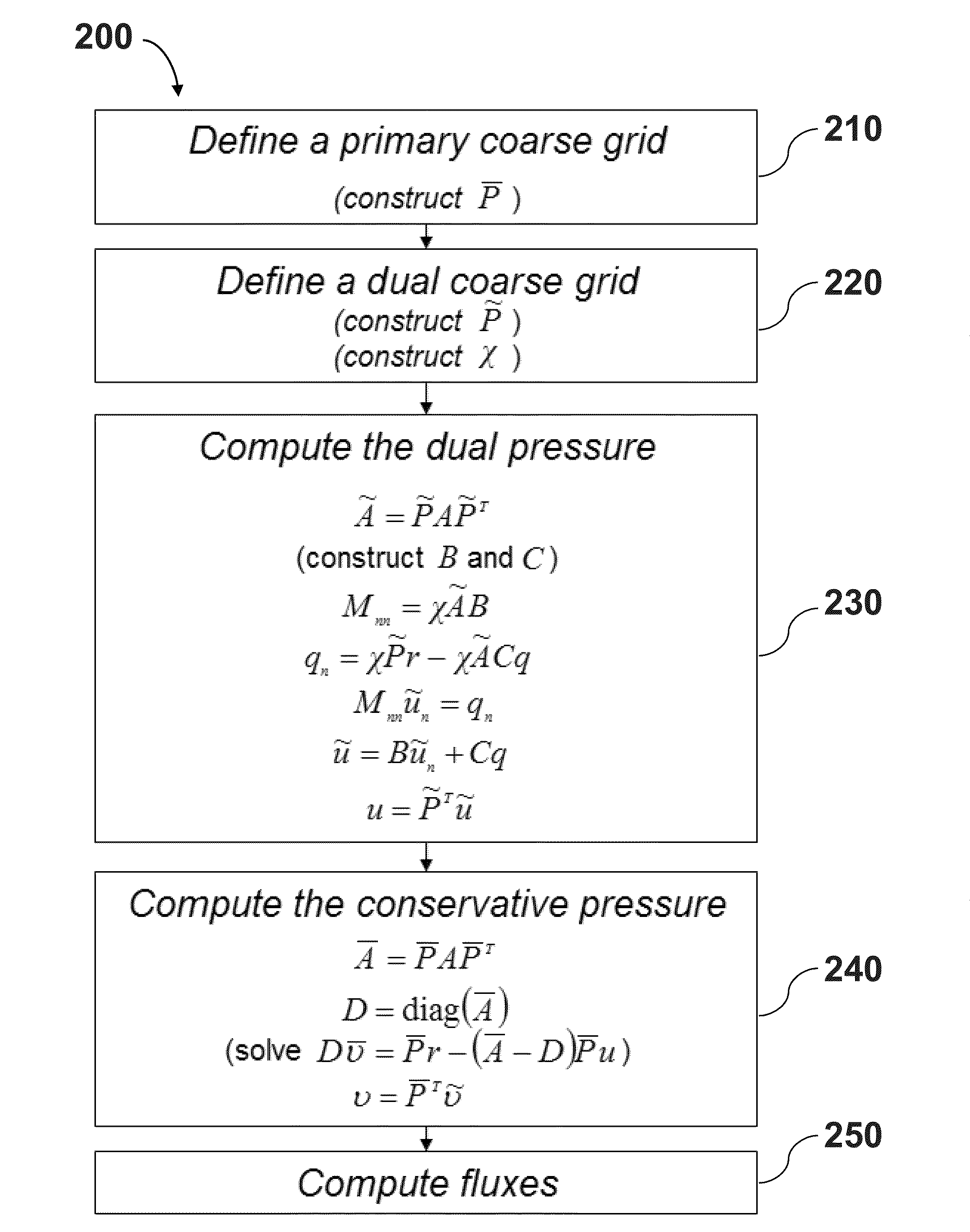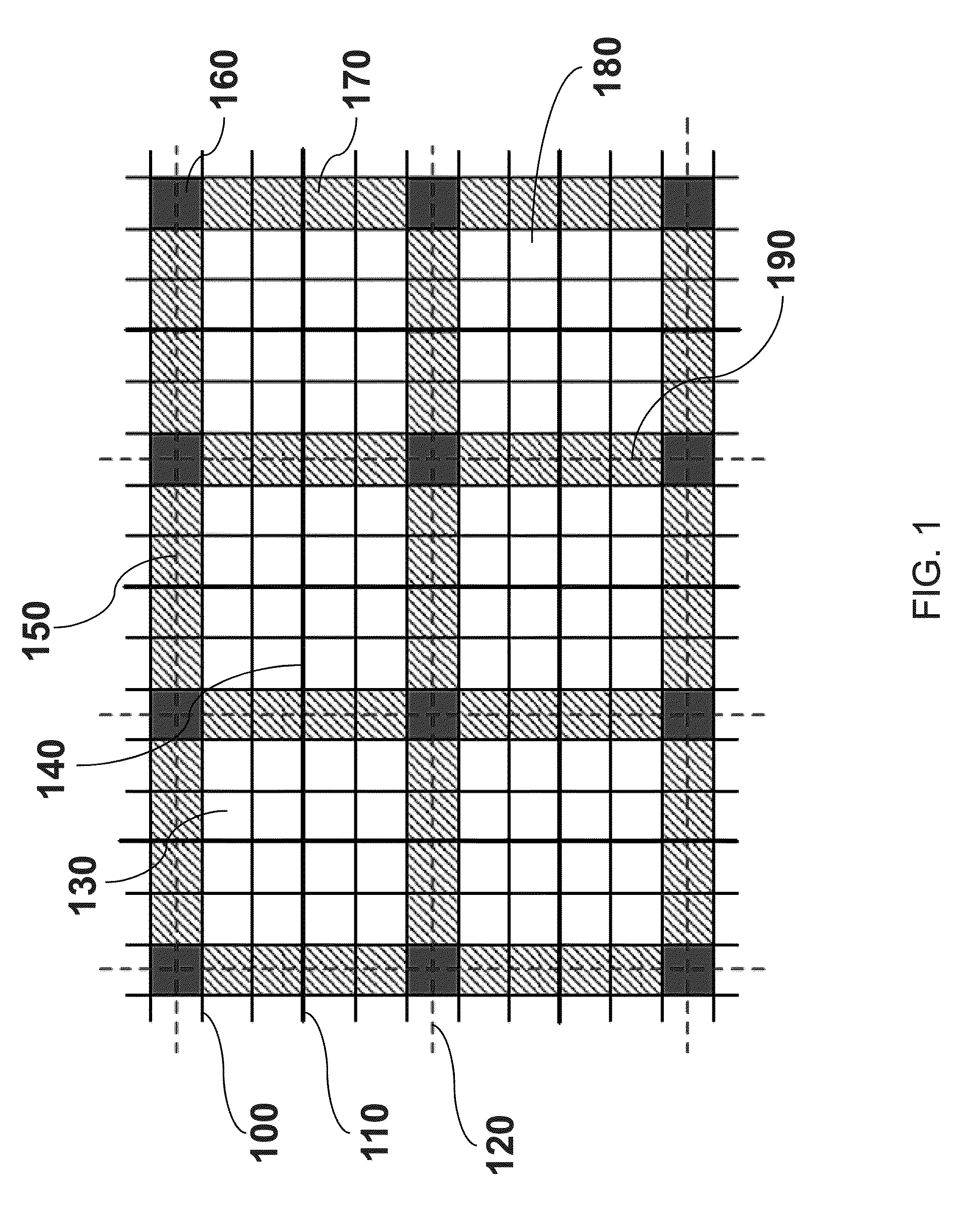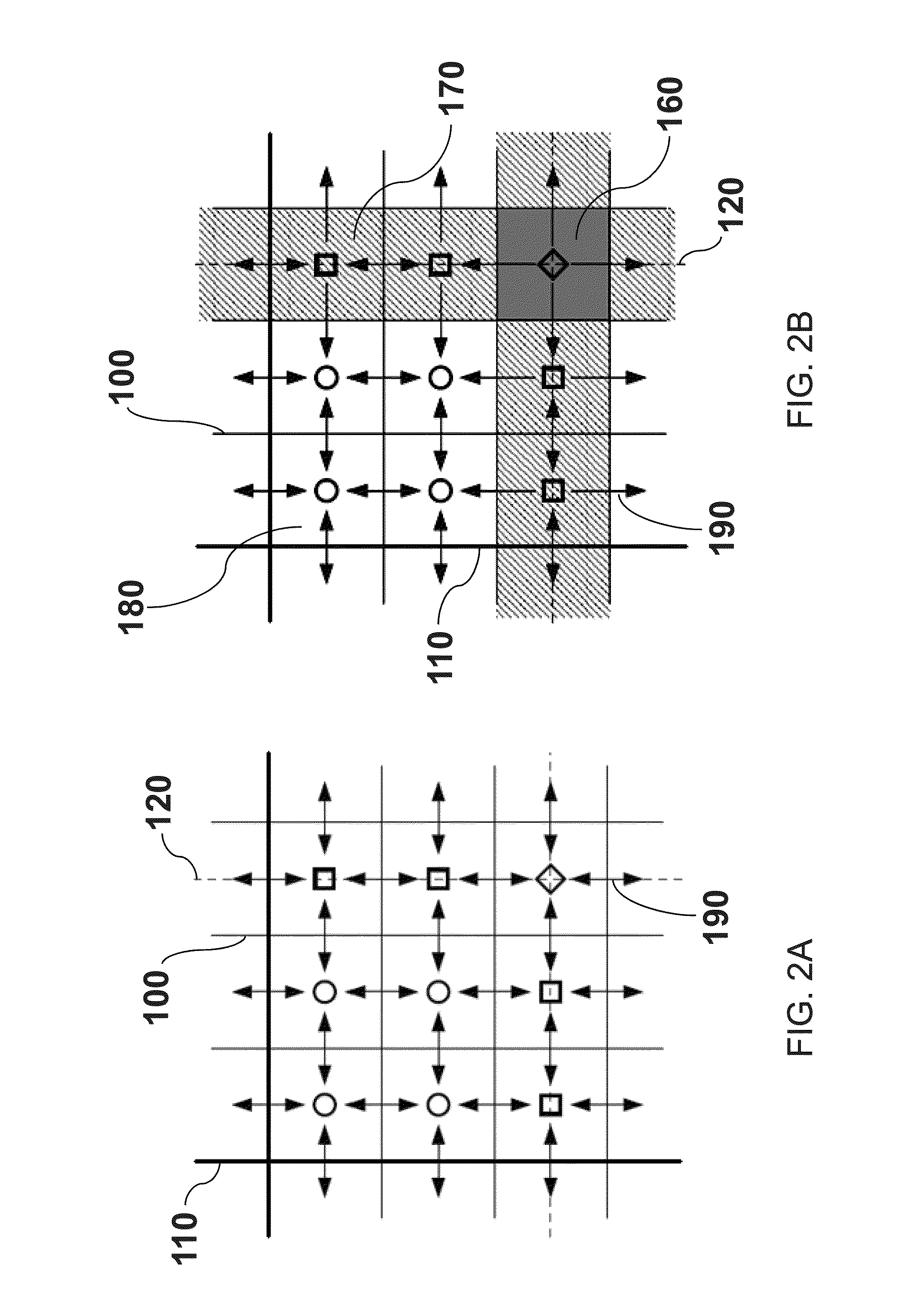Multi-scale finite volume method for reservoir simulation
a reservoir simulation and finite volume technology, applied in the field of reservoir simulation, can solve the problems of high heterogeneous and complex geological formations, inability to direct numerical simulation of subsurface fluid flow on the fine-scale, and inability to achieve mass conservative methods
- Summary
- Abstract
- Description
- Claims
- Application Information
AI Technical Summary
Benefits of technology
Problems solved by technology
Method used
Image
Examples
Embodiment Construction
[0019]Embodiments of the present invention describe methods that utilize multi-scale physics and are applied to simulation of fluid flow within a subterranean reservoir. In particular, the multi-scale finite volume method, taught in U.S. Pat. Nos. 6,823,297 and 7,496,488, which are herein incorporated by reference, is reformulated into a more general framework that allows for comparison with other simulation approaches such as multigrid, domain decomposition, and other multi-scale methods. As will be described in greater detail herein, permutation operators are introduced that conveniently allow for reordering unknowns and equations. This formulation simplifies the implementation of the multi-scale finite volume method into a reservoir simulator. Furthermore, the formulation can easily be integrated in a standard fine-scale solver. Embodiments of the present invention offer an optimal platform for investigating iterative approaches, which can improve the accuracy of simulation in cr...
PUM
 Login to View More
Login to View More Abstract
Description
Claims
Application Information
 Login to View More
Login to View More - R&D
- Intellectual Property
- Life Sciences
- Materials
- Tech Scout
- Unparalleled Data Quality
- Higher Quality Content
- 60% Fewer Hallucinations
Browse by: Latest US Patents, China's latest patents, Technical Efficacy Thesaurus, Application Domain, Technology Topic, Popular Technical Reports.
© 2025 PatSnap. All rights reserved.Legal|Privacy policy|Modern Slavery Act Transparency Statement|Sitemap|About US| Contact US: help@patsnap.com



